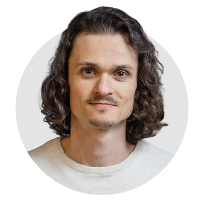Data science and industrial engineering: dual expertise to improve your industrial performance
1 June 2023How do you start your project to ensure the best ROI? What data should you choose? What methods should be applied? How can we reconcile industrial constraints with the performance of data science methods to address the targeted issues?


The DiagRAMS team answers these questions. Interview with Florent Dewez, Senior Data Scientist, and Hugo Nini, Business Manager, to understand the wealth of expertise they bring to their projects.
First of all, tell us about yourself
Hugo Nini – I’m 31 years old. After working in the automotive industry on process performance projects, I joined DiagRAMS Technologies as Business Manager to act as the link between the customer’s problem and our data-driven solution for improving industrial performance.
Florent Dewez – I’m 33 and a Senior Data Scientist at DiagRAMS Technologies. My doctorate in Physics and Mathematics led me to work in research laboratories, notably at Inria (French National Institute for Research in Digital Science and Technology) on industrial projects such as the optimisation of aircraft trajectories. Today, my job is to respond to (often complex) problems in the field through the prism of mathematics.
You work hand in hand right from the start of a project. Why is this essential?
H.N. – Upstream, the aim is to have a fruitful discussion with the customer, to challenge him, to better understand his problems, better define the specifications and identify the relevant data. The aim: to target the right dataset (to avoid the “shit in, shit out” effect). That’s why it’s important to visit the site with the data scientists, see the machines, discover the processes and meet the technical team.
F.D. – At the outset, the customer may provide us with a very large volume of data, coming from numerous sensors, over several years, and therefore giving rise to a multitude of variables to be analysed. The idea is not to start blindly, and it’s Hugo’s business expertise that will enable us to frame our data / AI approaches to better understand the process: which sensor for which data? What phenomenon should be analysed? The aim is to move in the right direction straight away.
How does your expertise feed into the work of others?
F.D. – For my part, the exchanges with Hugo enable me to analyse the processes more effectively, to focus on the right business indicators to define the best possible approach. The idea is to isolate the problem in the data, to create the right predictive model to monitor a few factors, but the most relevant ones. In return, my analysis guides Hugo in his relationship with the customer, enabling him to respond exactly to his request.
H.N. – Coming from different backgrounds, it’s precisely our many exchanges that will drive us forward in our businesses and on our projects. By working together, we’re able to make the link between the customer and the data, the problem and its response in the form of a tailor-made solution. I allow Florent to contextualise the data science study, while he gives me the opportunity to access the right data to gain clarity and efficiency.
Does this collaboration also have an impact on the customer’s deliverables?
F.D. – Our dual expertise enables us to guide the customer in collecting the necessary data, develop predictive models on our side to respond to the targeted problem and implement the required actions. It’s our collaboration that makes for greater efficiency, with a solution that hides the complex part from the customer.
H.N. – The aim is to achieve quick wins with a fast ROI for the customer. With my industrial experience, I can easily put myself in the shoes of a manager or maintenance technician and I know what business information is required. To meet our customers’ needs, we develop a tailor-made approach that can be deployed on a large scale if required.
Would you swap jobs?
H.N. – Florent is a great teacher, who takes the time to answer all my questions about predictive models. I learn a lot from him about data, code and visualisation, and in the end it’s the customers who benefit. But that doesn’t mean I’m going to make a career out of it… It’s a fascinating job, transforming a problem in the field into a monitoring solution based on scientific models. I’m too much of a people person, I can’t live in the dark 😉
F.D. – I trained as a scientist, so I’m naturally curious, and it’s a pleasure to compare our ideas and approaches with real-life cases. This allows me to better integrate the industrial constraints of all the stakeholders. Do you want to make a career out of it? While it’s very rewarding to have a macro view of the subject and to learn through contact with the customer, I’d miss the scientific aspect…


